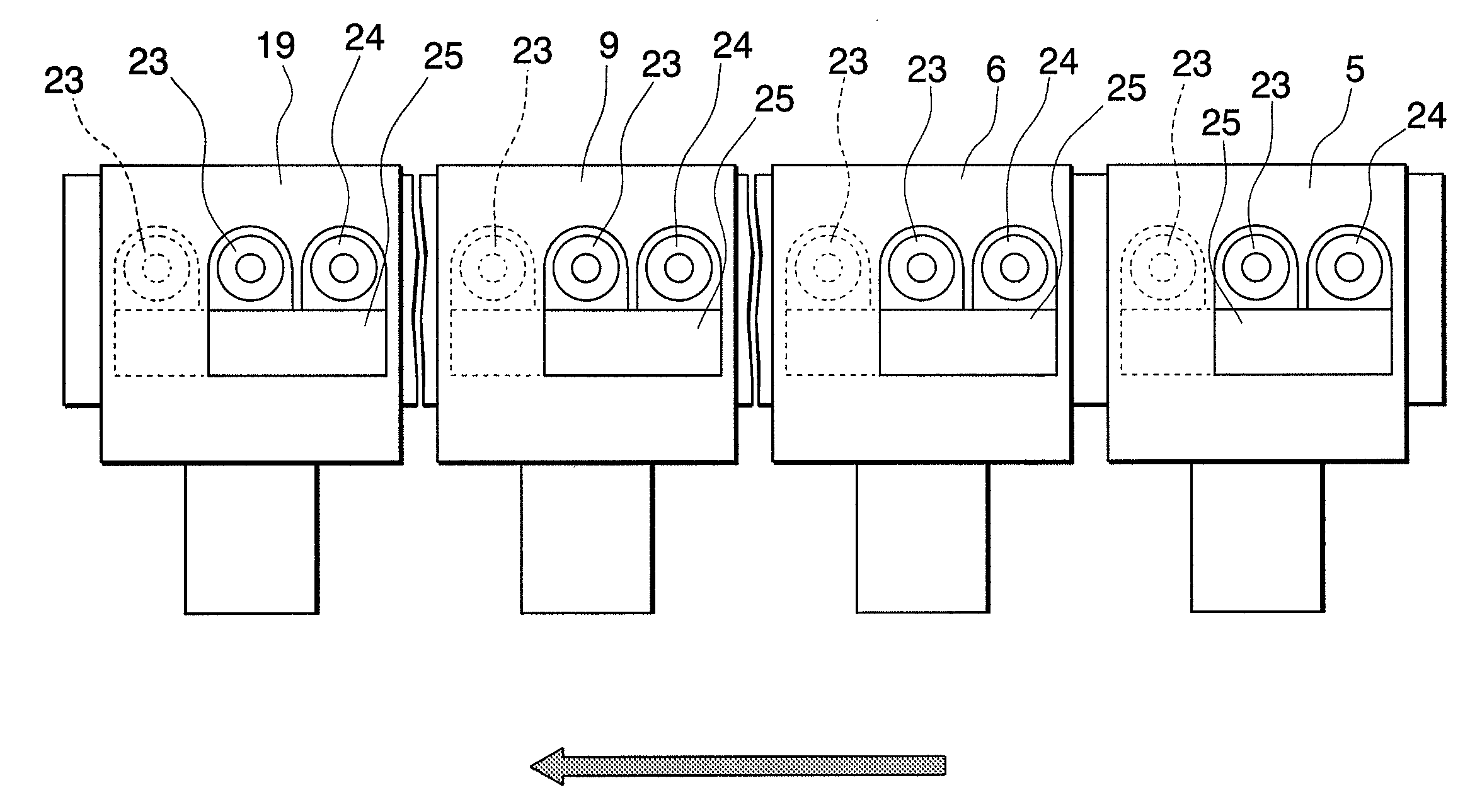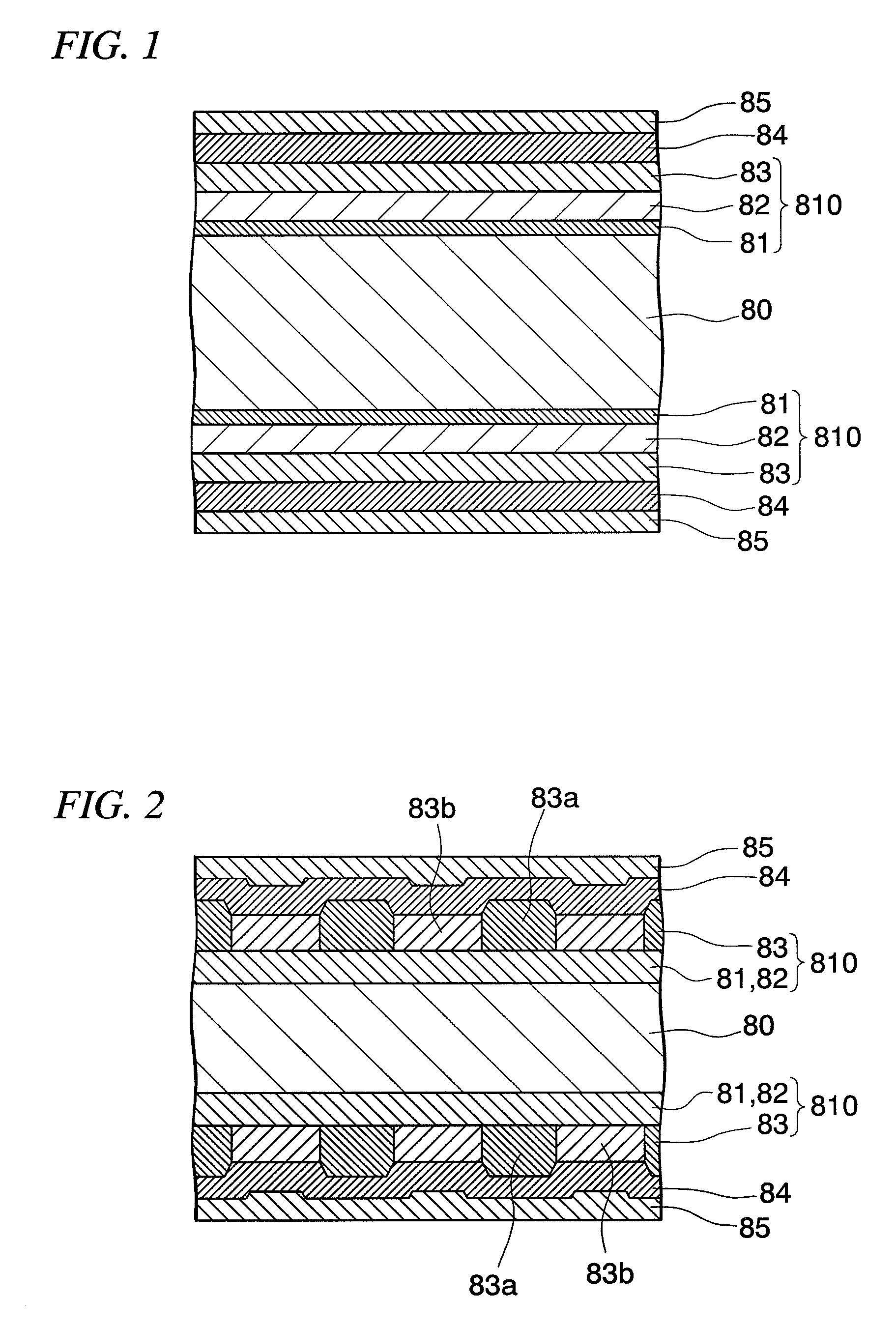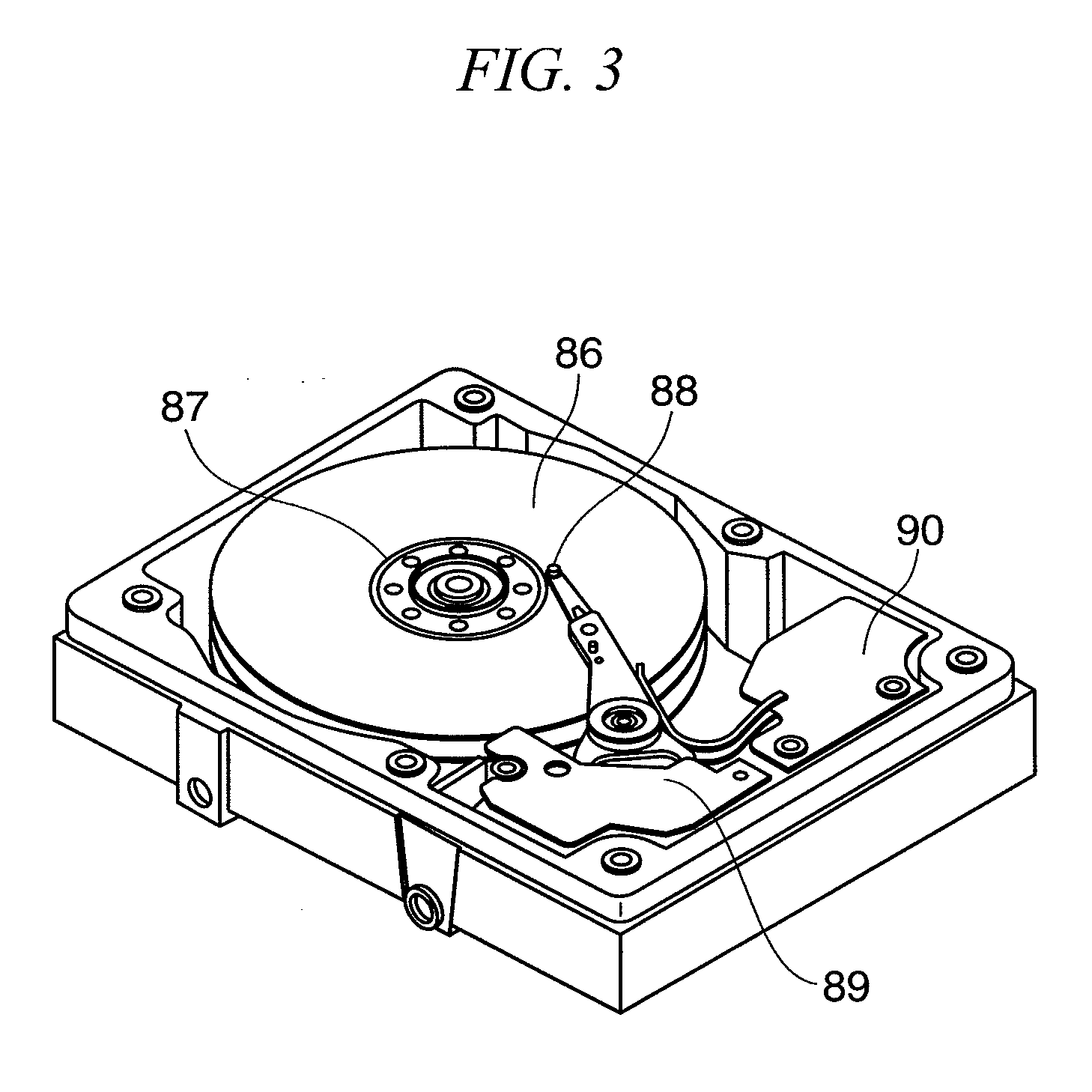Method for producing magnetic recording medium and producing apparatus thereof
a technology of magnetic recording medium and producing apparatus, which is applied in the direction of magnetic layer coating, vacuum evaporation coating, coating, etc., can solve the problems of corrosion resistance and inferior environmental resistance of the in-line film formation apparatus described above, and achieve the effects of improving environmental resistance, soft magnetic properties, and high recording density
- Summary
- Abstract
- Description
- Claims
- Application Information
AI Technical Summary
Benefits of technology
Problems solved by technology
Method used
Image
Examples
example 1
[0177]In Example 1, a glass substrate for the HD was prepared first as a nonmagnetic substrate and placed in a vacuum chamber of an in-line film formation apparatus. The vacuum chamber was evacuated to less than 1.0×10−5 Pa in advance. The glass substrate used herein was crystallized glass constituted by Li2Si2O5, Al2O3—K2O, Al2O3—K2O, MgO—P2O5 and Sb2O3—ZnO. The glass substrate was formed such that the outer diameter was 65 mm, the inner diameter was 20 mm and the average surface roughness (Ra) was 2 {acute over (Å)}.
[0178]The magnetic layer was formed on the both sides of the glass substrate by laminating FeCoB as the soft magnetic layer, Ru as the intermediate layer and a 70Co-5Cr-15Pt-10SiO2 alloy as the magnetic recording layer by DC sputtering method. The thickness of the soft magnetic layer was 600 {acute over (Å)}, the thickness of the intermediate layer was 100 {acute over (Å)} and the thickness of the magnetic recording layer was 150 {acute over (Å)}.
[0179]Next, the mask l...
example 2
[0193]In Example 2, a magnetic recording medium was produced in the same manner as in Example 1 except that CF4 gas was used instead of an O2 gas for etching the Ta layer in the processing chambers 16 and 18.
(Evaluation of Corrosion Resistance)
[0194]Corrosion resistance was evaluated for the magnetic recording media of Examples 1 and 2 and Comparative Example 1. For the evaluation, all of the magnetic recording media was kept in an ambient air environment with a temperature of 80° C. and a humidity of 85% for 96 hours. The number of the corrosion spots having a diameter larger than 5 microns φ developed on the surface of the magnetic recording medium was counted.
[0195]A 3% nitric acid solution was dropped at five points (i.e., 100 microliters / point) and pure water are dropped at five points (i.e., 100 microliters / point) on the surface of each of the magnetic recording media. The magnetic recording medium was left for one hour and then collected. The amount of Co contained was measur...
PUM
| Property | Measurement | Unit |
|---|---|---|
| Ra | aaaaa | aaaaa |
| Ra | aaaaa | aaaaa |
| Ra | aaaaa | aaaaa |
Abstract
Description
Claims
Application Information
 Login to View More
Login to View More - R&D
- Intellectual Property
- Life Sciences
- Materials
- Tech Scout
- Unparalleled Data Quality
- Higher Quality Content
- 60% Fewer Hallucinations
Browse by: Latest US Patents, China's latest patents, Technical Efficacy Thesaurus, Application Domain, Technology Topic, Popular Technical Reports.
© 2025 PatSnap. All rights reserved.Legal|Privacy policy|Modern Slavery Act Transparency Statement|Sitemap|About US| Contact US: help@patsnap.com



